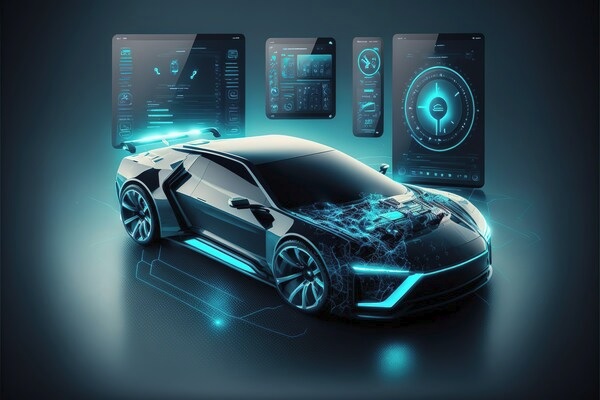DXC Technology has forecast five ways the automotive industry will reshape our relationship with cars in the next five years.

DXC Automotive 5in5 (credit Adobe)
The shift to software-defined vehicles is transforming every aspect of the automotive industry — from how cars are designed, to how they are made, to how we use and service them. Crucially, the car user's relationship with the rich ecosystem of partners and services that makes up the auto industry is changing. DXC and Luxoft (a DXC company), see evidence that these five trends are accelerating:
1. Software-defined vehicles
Tomorrow's cars will be software-defined vehicles (SDVs), with their features and functions controlled by software.
"SDVs will be known more for their user experience than their physical attributes. Software will create a direct connection between the car manufacturer and the customer, enabling platform-driven auto businesses which seamlessly deliver personalized services to customers via their vehicles," said Matthias Bauhammer, Global Lead, Robotic Drive Offering at DXC Technology.
This data exchange will not be limited to a single car and its manufacturer. "Crowd data" from millions of vehicles can be used to provide more intelligent mobility services across an entire automotive ecosystem. For example, Gaia-X 4 Future Mobility is a European initiative to enable close interconnectivity between car users, service providers, manufacturers, and suppliers. Applications include smart traffic infrastructure, vehicle lifecycle management, and digital twins for autonomous vehicles.
2. On-demand upgrades
With cars becoming increasingly software-defined and connected to the web, their ability to self-heal, self-renew, and self-refresh will increase.
"Our phone's software is regularly updated, adding new features, downloading apps, updates and security patches to fix issues and make our devices more useful. The car may have some way to go before it becomes as dynamic and interactive as our phone, but it is clear that we are seeing a similar evolution," said Karsten Hoffmeister, Head of Autonomous Drive at Luxoft.
Most of the world's automakers are already experimenting with on-demand services that flow as software to users, and some car companies are looking at monetizing software upgrades.
3. Owning a car may be a thing of the past
How we live and work is changing. Hybrid working reduces the need for many employees to commute by car every day. Many younger people may want the convenience of a car but not the traditional ownership model, which is typically expensive, high-responsibility and inflexible. A different approach to getting on the road is paying for a vehicle only when you need one, perhaps through a subscription-based, car-sharing or peer-to-peer rental service. With their on-demand and remote-control features, SDVs lend themselves to this type of service.
Several car manufacturers are experimenting with car subscription models, including Audi, Lexus, Nissan, Porsche and Volvo. Many third parties also offer subscription services, including car rental companies for whom this is a logical service extension to existing services.
Automated maintenance
"As part of the Internet of Things (IoT), the connectivity built into cars will be used to transmit real-time vehicle diagnostics that will be used to plan increasingly sophisticated and convenient predictive maintenance schedules," said John Makin, Automotive Strategist at Luxoft.
Feedback from advanced analytics powered by artificial intelligence (AI) will enable the car to flag imminent issues to the garage, dealership, or direct to the manufacturer. The diagnostic information will be shared with mechanics ahead of time so they can order the necessary components. This technology will lift some of the responsibility off the driver to spot car maintenance issues while enhancing road safety.
Hydrogen fuel
Global electric vehicle (EV) sales are surging. In China, the world's largest automotive market, EVs already represent 21% of the market. According to consultancy AutoForecast Solutions, EVs could account for a third of the North American market, and about 26% of vehicles produced worldwide, by 2029.
That said, the rising cost of EV batteries, long waiting times for cars and parts, and issues with scaling recharging infrastructure in line with growing demand, are already impacting adoption. In many cities around the world, today's drivers have to wait for over an hour to charge their vehicles at public charging points.
With their smart routing and energy optimization capabilities, SDVs can mitigate many of these issues; however, the hunt is on for viable fuel alternatives to power them.
Initial tests of hydrogen fuel cells at Germany's DLR Institute for Vehicle Concepts in Stuttgart show that, with a tank capacity of 6.3 kg of hydrogen, a vehicle can generate somewhere in the region of 100 kWh of electricity. That's equivalent to around the average monthly consumption of a one-person household. As vehicles become more software-defined, DXC anticipates further development of alternative fuel sources across the automotive industry.




